Uzbek Dishes: Basic Overview
Common Ingredients
Common Cooking Methods
Courses
Meals
Key Taste
Eating Etiquette
Meal Presentation
Culinary Festivals
Influence and Fusion
Popular Types of Uzbek Dishes
-
Breads and Doughs
Uzbek breads, or “non,” are made from wheat flour and yeast.
Baked in a tandoor, these round, flat breads are vegan, and vegetarian-friendly.
They feature decorative patterns, with a unique smoky flavor and a crusty exterior, and are central to ceremonies and rituals.
-
Cakes and Pastries
Uzbek cakes and pastries, predominantly made from wheat flour, feature a blend of savory and sweet flavors.
These items are baked, fried, or steamed, with their shapes ranging from triangular to round.
They are integral to both everyday life and special celebrations in Uzbek culture.
-
Desserts
Uzbek desserts are rich with nuts, honey, and dried fruits.
Desserts in the country vary from crispy deep-fried pastries to soft, baked spoonable delicacies.
They are typically not vegan or gluten-free due to dairy and wheat flour. Vegetarian options are available.
-
Noodle Soups
Uzbek noodle soups typically feature hand-pulled, wheat-based noodles, making them non-gluten-free.
They are generally prepared with meat-based broths, often using beef or lamb.
These soups are rich in vegetables and spices, offering a hearty and flavorful meal.
-
Dry Noodle Dishes
Uzbek dry noodle dishes commonly use flat, broad, or thin, hand-pulled wheat noodles, so they are not gluten-free.
They often feature meat like horse meat, lamb, or beef, and can be served hot or cold.
These dishes are typically topped with boiled vegetables, meat, or served with a light meat broth.
-
Dumplings
Uzbek dumplings predominantly feature all-purpose flour-based dough, which is not gluten-free.
These dumplings are commonly filled with meat, such as beef or lamb.
They are often seasoned with rich spices. The cooking methods include boiling or steaming.
Their shapes vary, but they are typically crafted to encase the filling securely, ranging from crescent to more intricate forms.
-
Fermented Dishes
Fermented dishes in Uzbek cuisine often involve dairy products, with a focus on yogurt and milk.
Typically, they are not suitable for vegan diets due to their dairy content, but some can be adaptable for vegetarian diets.
The fermentation process in these dishes adds tangy, salty, or sweet flavor.
Most of them are gluten-free options.
-
Grilled and Barbecued Dishes
Grilled and barbecued dishes in Uzbek cuisine predominantly feature meats such as chicken, lamb, and beef.
These dishes are flavored with a mix of spices and herbs, and cooked over open flames or in a tandoor, giving them a smoky taste.
These dishes are often gluten-free and are commonly served at social events.
-
Snacks
Snacks in Uzbek cuisine often feature-rich, savory flavors, with a prominent use of meats and dairy.
Many include dough-based components, such as flaky pastries or stuffed wraps.
There are both sweet and savory snacks.
-
Soups
Uzbek soups are hearty, featuring rich meat broths from lamb, beef, or horse meat.
Other common ingredients include vegetables, mung beans, barley, herbs and spices.
Simmering is a common method used to enhance taste, making these soups ideal for cold-weather nourishment.
-
Stews
Uzbek stews are meat-centric, often using beef, lamb, or poultry.
They are not typically vegan or vegetarian, and some are not gluten-free.
These stews feature a mix of root vegetables and spices, cooked slowly to enhance flavor and tenderness.
Uzbek Dishes: Signature Culinary Delights
-
Most Popular Dishes
These popular Uzbek dishes are widely enjoyed in the country.
They are readily available in restaurants, eateries, and street vendors.
-
National Dish
Uzbekistan’s national dish, pilaf (or plov) is a rice dish featuring long-grain rice, vegetables, and meat (usually lamb), cooked in a kazan (cast-iron cauldron).
Plov is central to Uzbek culture, often prepared for special occasions and family gatherings.
-
Traditional Dishes
Traditional Uzbek dish is a diverse blend of sweet, sour, and savory flavors, characterized by its generous use of meat, aromatic spices, and hearty ingredients.
This culinary tradition reflects Uzbekistan’s rich cultural heritage and pastoral history.
Notable time-honored dish types include rice dishes, noodle soups, dry noodle dishes, breads and doughs and desserts.
-
Street Food Dishes
Uzbek street foods typically feature savory flavors with a mix of spices and herbs, creating a rich, aromatic taste.
These dishes often include baked or fried pastries, grilled meats, and traditional flatbreads, known for their crispy textures and smoky notes.
-
Exotic Dishes
Exotic Uzbek dishes are known for their robust, meat-centric compositions and a complex blend of savory and aromatic spices.
These characteristics create a rich and nuanced flavor profile, often with subtle sweetness or mild heat.
-
Fusion Dishes
Uzbek fusion dishes combine flavors from various countries, creating a unique blend of savory and aromatic profiles.
The types of dishes vary from dumplings and soups to grilled meats and stews, reflecting influences from Russia, Georgia, China, India, Korea and the Middle East.
Uzbek dishes encompass the foods of Uzbekistan, a country in Central Asia. Well-known dishes include lagʻmon (laghman), somsa (samsa), manti, chuchvara (joshpara), shurpa (chorba), and dimlama, with the national dish being plov (pilaf).
Uzbekistan’s cuisine is influenced by a diverse array of culinary traditions, including Russian, Ottoman (Turkish), Georgian, Persian (Iranian), Arab, Korean, Indian, and Uyghur (Northwestern China).
Uzbek foods reflect the role of both nomadic lifestyles and grain farming in the country. Staple ingredients in Uzbek cuisine include meat, dairy products, grains, fruits, and vegetables.
Holidays in Uzbekistan, particularly Nowruz (locally known as Navruz), feature many special dishes. Notable examples are nauryz kozhe, sumalak (sumanu), plov, and dolma.
Uzbekistan also has a vibrant street food landscape with many affordable and mouth-watering choices, such as somsa, shashlik, baursak (boortsog), and börek.
Uzbek cuisine boasts a large number of stewed and boiled dishes, soups, noodle dishes, breads, cakes, and pastries.
Therefore, stewing (or simmering and slow cooking), boiling, baking, and many forms of frying are ubiquitous cooking methods in Uzbekistan.
Have I piqued your interest in Uzbek dishes? Stay tuned to learn more about them, such as their history, staple ingredients, regional differences, and seasonal influence.
But that’s not all; I will also explore the influence of Uzbek dishes in other countries and address frequently asked questions.
47 Most Popular Uzbek Dishes with Filters
#1
in Uzbekistan
#2
in Uzbekistan
#3
in Uzbekistan
#4
in Uzbekistan
#5
in Uzbekistan
#6
in Uzbekistan
#7
in Uzbekistan
#8
in Uzbekistan
#9
in Uzbekistan
#10
in Uzbekistan
#11
in Uzbekistan
#12
in Uzbekistan
#13
in Uzbekistan
#14
in Uzbekistan
#15
in Uzbekistan
#16
in Uzbekistan
#17
in Uzbekistan
#18
in Uzbekistan
#19
in Uzbekistan
#20
in Uzbekistan
#21
in Uzbekistan
#22
in Uzbekistan
#23
in Uzbekistan
#24
in Uzbekistan
#25
in Uzbekistan
#26
in Uzbekistan
#27
in Uzbekistan
#28
in Uzbekistan
#29
in Uzbekistan
#30
in Uzbekistan
#31
in Uzbekistan
#32
in Uzbekistan
#33
in Uzbekistan
#34
in Uzbekistan
#35
in Uzbekistan
#36
in Uzbekistan
#37
in Uzbekistan
#38
in Uzbekistan
#39
in Uzbekistan
#40
in Uzbekistan
#41
in Uzbekistan
#42
in Uzbekistan
#43
in Uzbekistan
#44
in Uzbekistan
#45
in Uzbekistan
#46
in Uzbekistan
#47
in Uzbekistan
Uzbek Dish Images
What Is the History of Uzbek Dishes?
The history of Uzbek dishes represents the rich and varied past of Uzbekistan.
Persian Influence
Persian nomads were among the earliest ancestors of Uzbekistan, and the lands were later incorporated into several Persian empires. This development made Persian dishes central to Uzbek cuisine.
While the Persian influence has waxed and waned over time, its presence is still palpable in the way Uzbeks cook.
Islamic Tradition
When Islam was introduced to Central Asia in the 8th century, it considerably changed local cuisine, namely by promoting halal foods.
The spread of Islam also enabled culinary exchanges between Central Asia, including Uzbek tribes, and the Middle East.
Silk Road
Uzbekistan’s location on the Silk Road, the trade route network connecting East and West, played a significant role in shaping its cuisine.
The country was a melting pot where traders and travelers from different parts of the world interchanged culinary traditions, such as those from China or West Asia.
Turkic Cuisine
In the 11th century, Turkic tribes began flooding what is now Uzbekistan, bringing their culinary traditions to the new home.
The Ottoman Empire was later formed by Turkic tribes, and its cuisine shared many similarities with the foods of Central Asia, including those of Uzbekistan.
Russian and Soviet Influence
The periods of the Russian Empire and later the Soviet Union introduced new dishes and ingredients to Uzbek cuisine.
During the Soviet era, dishes from other parts of the USSR became common in Uzbekistan, and vice versa.
Uzbek cuisine only evolved to its modern form in the last one or two centuries, demonstrating the importance of those periods.
Global Influence
Since the collapse of the Soviet Union, Uzbekistan’s cuisine has undergone new changes, opening up to international trends and forming its national identity.
Now that you’ve understood the rich history of Uzbek dishes, let’s turn to the popular ingredients they usually employ.
What Are the Staple Ingredients in Uzbek Dishes?
Below is the overview of the key ingredients used in Uzbek dishes:
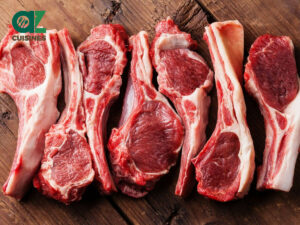
Meat
Mutton, beef, horse meat, and chicken are common varieties, with mutton as the most popular one. Camel meat is also a well-liked choice in Uzbekistan, famous for its gamey flavor.
Traditional Uzbek foods are heavy on meat. Lamb fat derived from local fat-tailed sheep is the cooking fat for many traditional dishes.
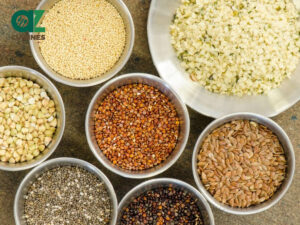
Grains
Wheat is the staple grain for Uzbeks since it is the main ingredient for staple dishes like bread, noodles, and dumplings. Another vital grain is rice, which is used to prepare plov, Uzbekistan’s national dish.
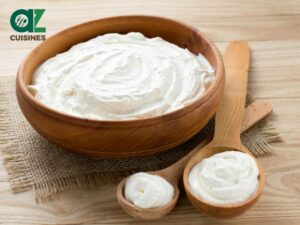
Dairy products
Many Uzbek dishes feature ingredients made from fermented milk, especially strained yogurt. Sour cream is a beloved Russian contribution.

Vegetables
Traditional Uzbek soups and stews often feature vegetables like onions, carrots, and potatoes for extra heartiness. Salads or appetizers made with fresh produce, such as tomatoes or cabbage, are also popular.
There are many seasonal vegetables in Uzbekistan, with spring and summer being the best times to try them.
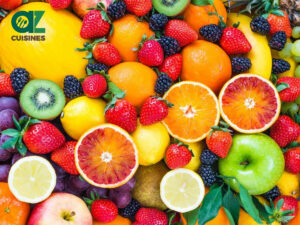
Fruits
Fruits, especially dried fruits like raisins and apricots, are often incorporated into dishes for a unique flavor.
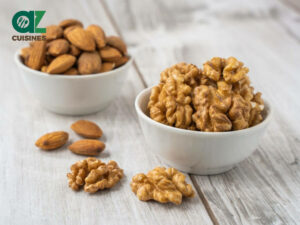
Nuts and Seeds
Uzbeks sometimes use almonds, walnuts, sesame seeds, and similar ingredients in cooking or as garnishes.
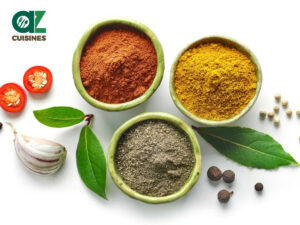
Spices
Common choices include cayenne pepper, black pepper, black cumin, dried bay leaves, barberries, and coriander.
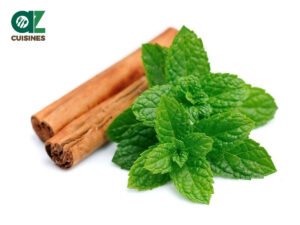
Herbs
People in Uzbekistan usually flavor their dishes with thyme, dill, basil, parsley, celery, etc.
These ingredients constitute all the dishes in Uzbek cuisine, with different regions having their own ways of preparing and combining them.
What Are The Regional Differences in Uzbek Dishes?
Each region in Uzbek offers a unique approach to food. However, dishes in the country often under the effects of the following 4 areas:
| Region | Characteristics |
|---|---|
| Tashkent | Fond of lamb. Has grilled or stewed lamb as staples Can include lamb in rice dishes. Loves spicy foods |
| North-Eastern Region | Known for horse meat, such as naryn and beshbarmoq (beshbarmak). |
| South-Western Regions (Bukhara and Samarkand) | The cuisine is influenced by local Jewish heritage and unique regional dishes. People like having green tea. |
| Far-Western Region (Khorazm) | Specialties include tukhum-barak and shivit osh. |
Once you’ve uncovered the food differences between regions, let me introduce you to the seasonal aspect that dictates the flavor of many dishes.
What Are The Regional Differences in Uzbek Dishes?
Seasons in Uzbekistan greatly affect the ingredient’s quality and availability, with summer and winter being the two most significant seasons:
Winter
During the colder months, the Uzbek diet typically includes dried fruits and vegetables, preserves, and noodles. They are popular picks for their long shelf-life and nutrients.
Summer
In the summer, the country offers an array of fresh produce, including fruits, nuts, and vegetables. Melons are a particularly famous staple due to their exquisite and refreshing taste.
Thanks to the seasonal factor, Uzbkes dishes have various flavors that are also adopted in many nearby countries.
What Are the Influences of Uzbek Dishes on Neighboring Countries?
Uzbek specialties leave a mark on the Central Asian culinary scene. Usually, these hallmarks of dishes from Uzbekistan often appear in many nearby countries through these features:
Shared Historical Roots
Uzbek and other countries in Central Asia (Tajikistan, Kyrgyzstan, Kazakhstan, and Turkmenistan) share a culinary history with Turkish, Persian, and Russian influences.
Dumplings and Noodle Dishes
Many dishes of Afghanistan, like noodles and dumplings, take inspiration from Uzbek cuisine.
Bread and Baking Techniques
Bread is a staple in many Central Asian cuisines. Uzbek influence can be seen in the baking techniques and types of bread consumed in neighboring countries.
For instance, the Uzbek practice of baking flatbread in a tandoor oven is also common in Afghanistan.
Meat Dishes and Cooking Methods
Meat is a central element in Uzbek cuisine, and this influence extends to neighboring countries. Mutton is a favorite pick since they are raised in many countries.
Baking, grilling, and stewing are also popularized by Uzbek cooking.
Festive and Ceremonial Foods
Festive and ceremonial foods in neighboring countries often show Uzbek influences. One prime example is pilaf, with many countries having a version of this dish for communal and festive events.
Keep reading to expand your understanding of Uzbek cuisine through these fascinating inquiries about the topic.


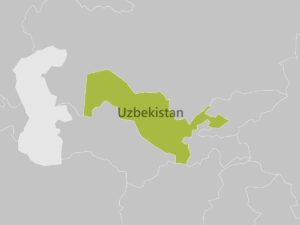
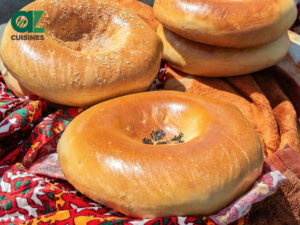
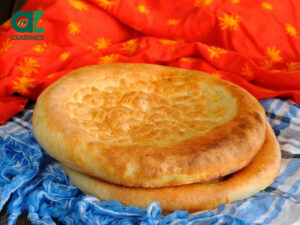
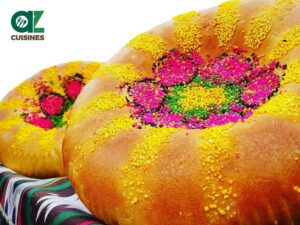
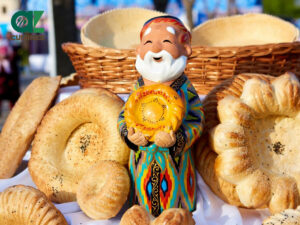
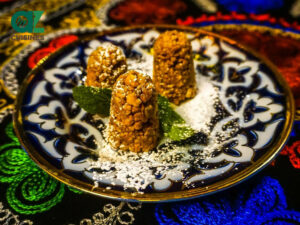
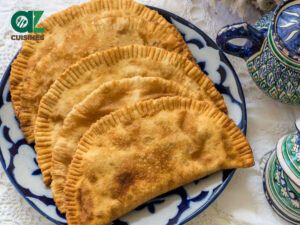
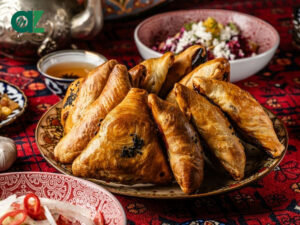
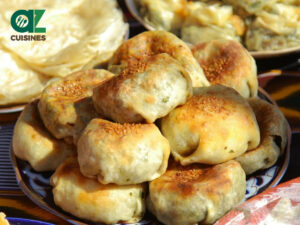
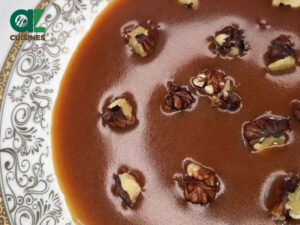
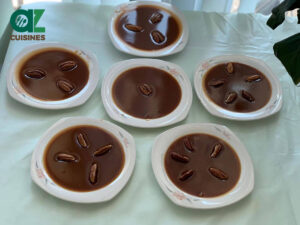
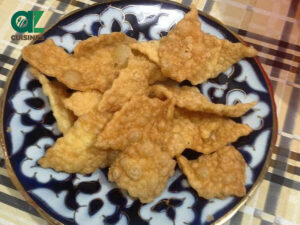
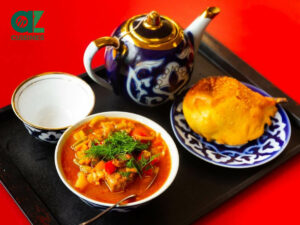
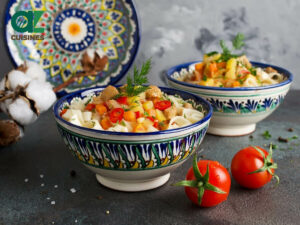

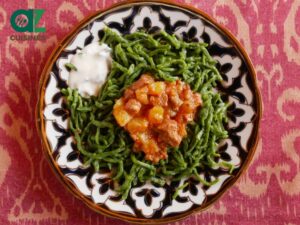
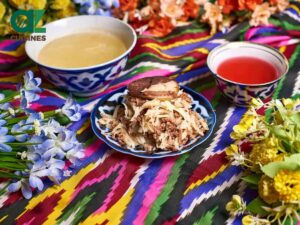
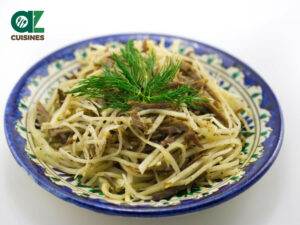
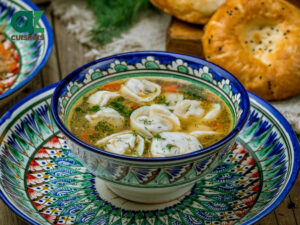

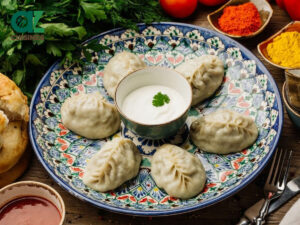
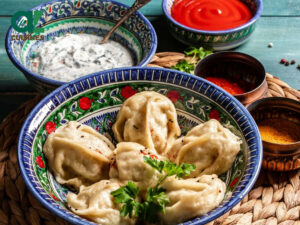
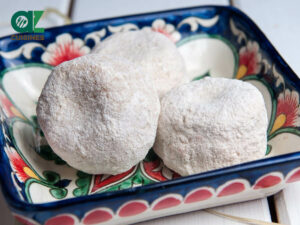
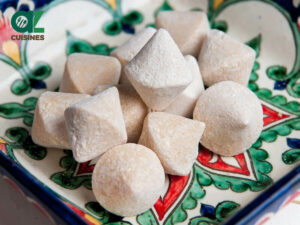
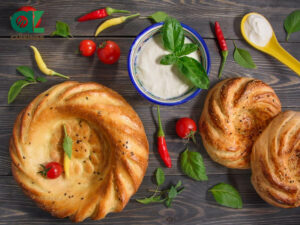
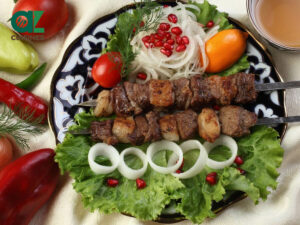
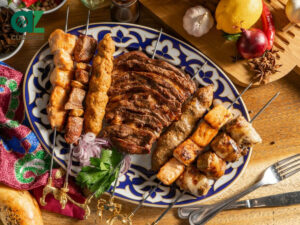
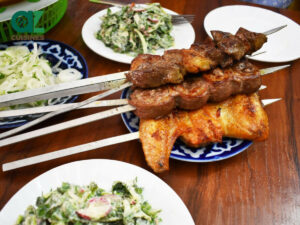
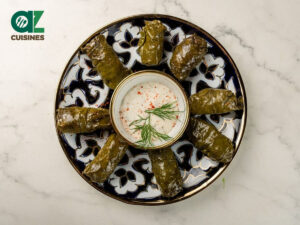
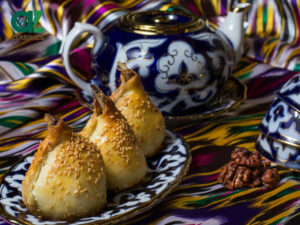
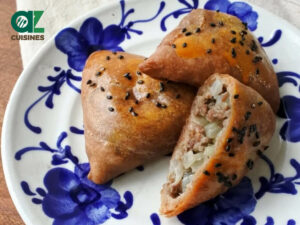
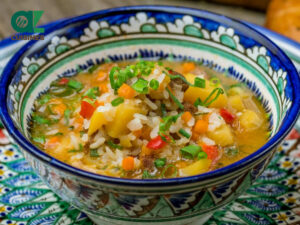
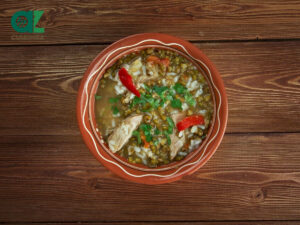
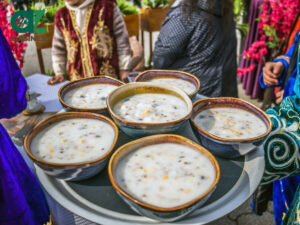
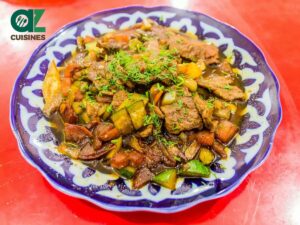
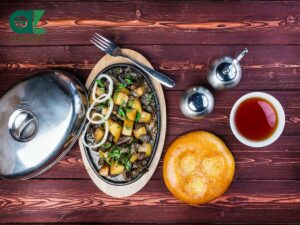
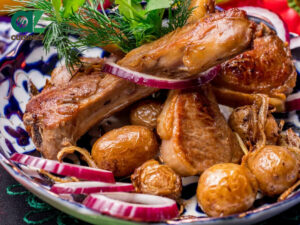
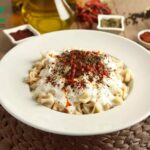
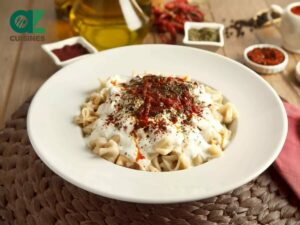
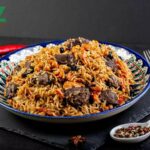
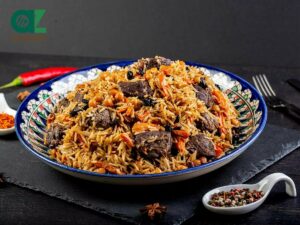
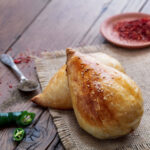
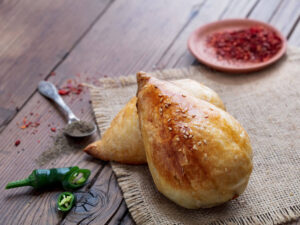
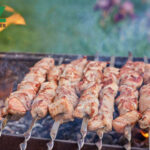
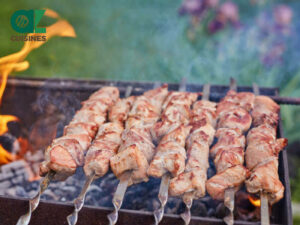




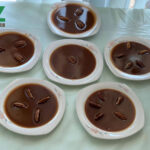
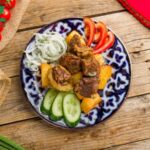
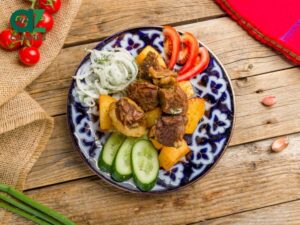
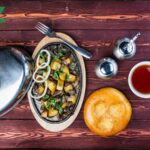
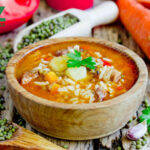
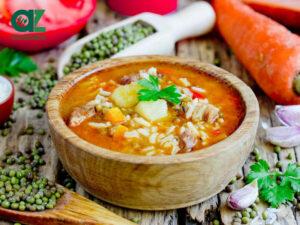
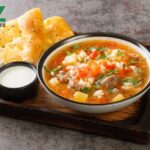
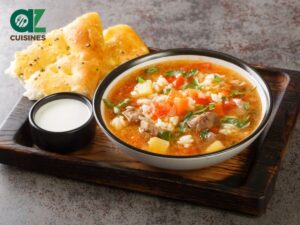

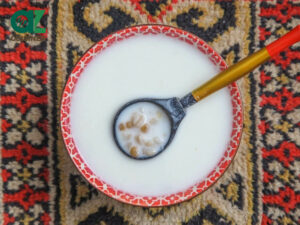
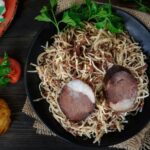



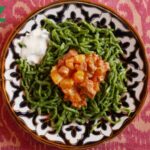
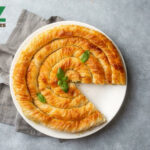
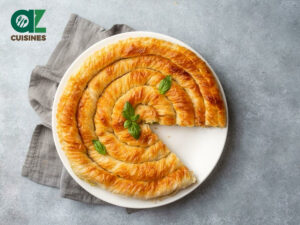
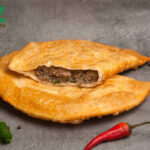
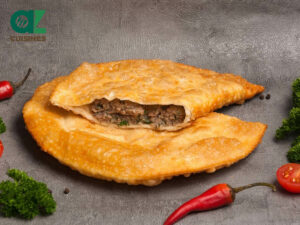
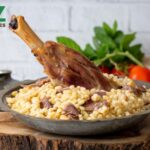
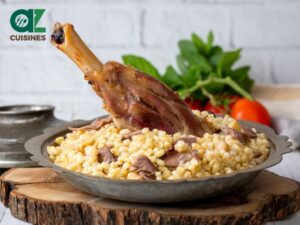
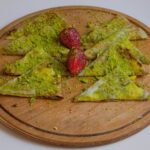
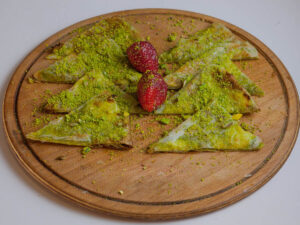
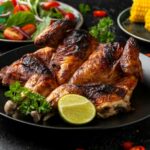
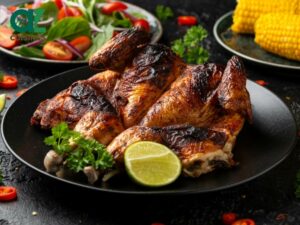
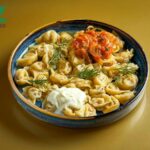
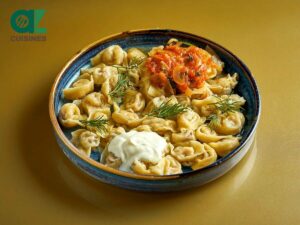
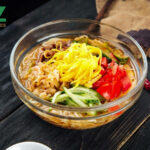
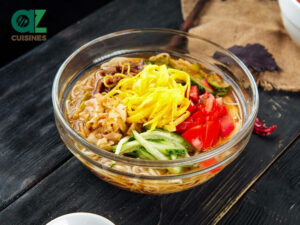
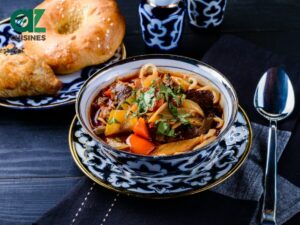
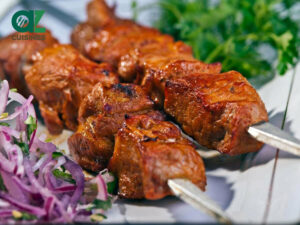
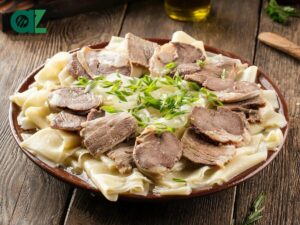
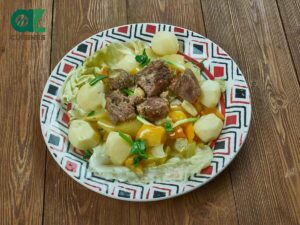
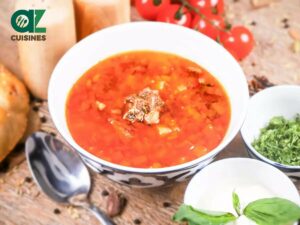
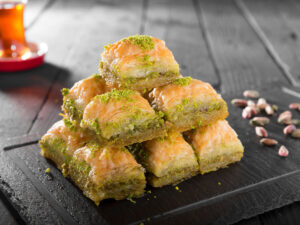
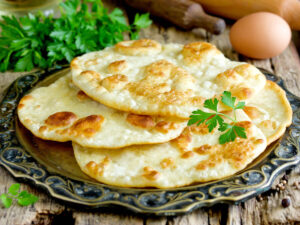
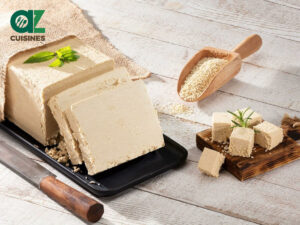
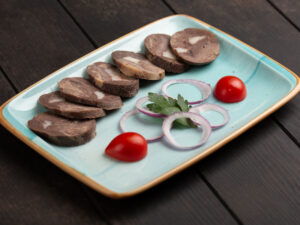
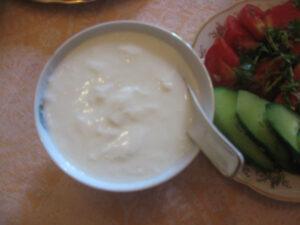
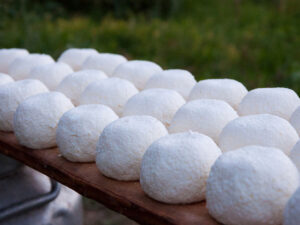

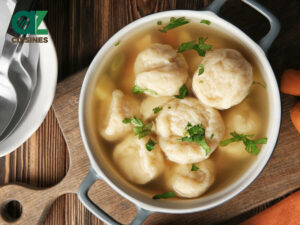
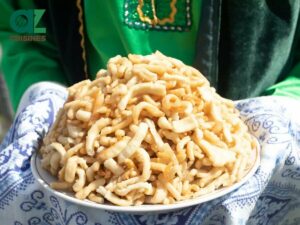
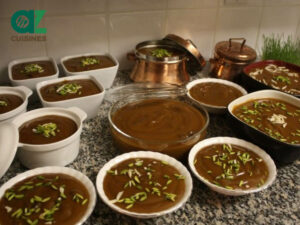
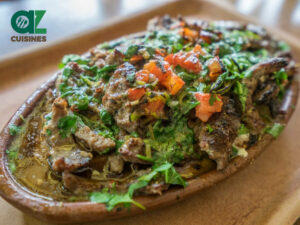
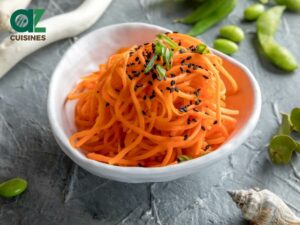
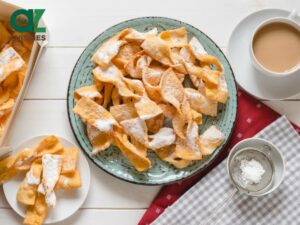
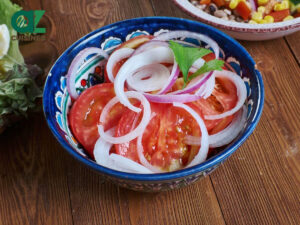
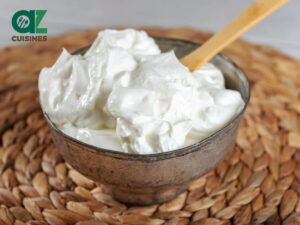
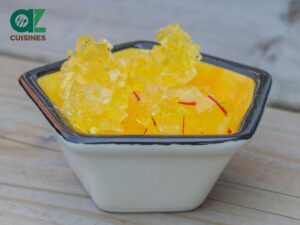
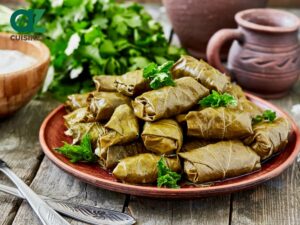
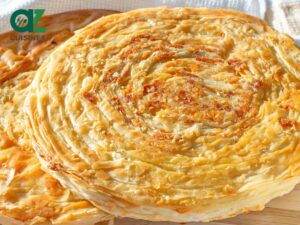
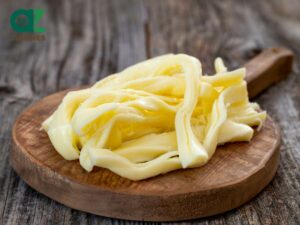
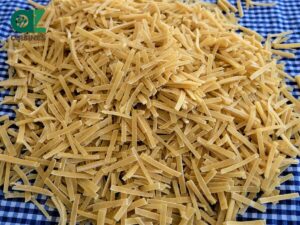
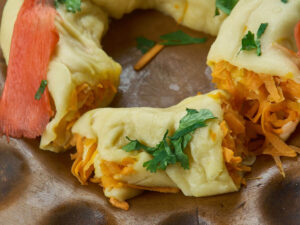
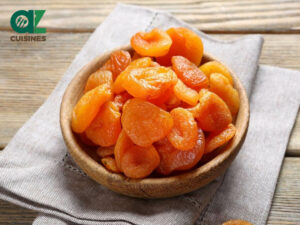
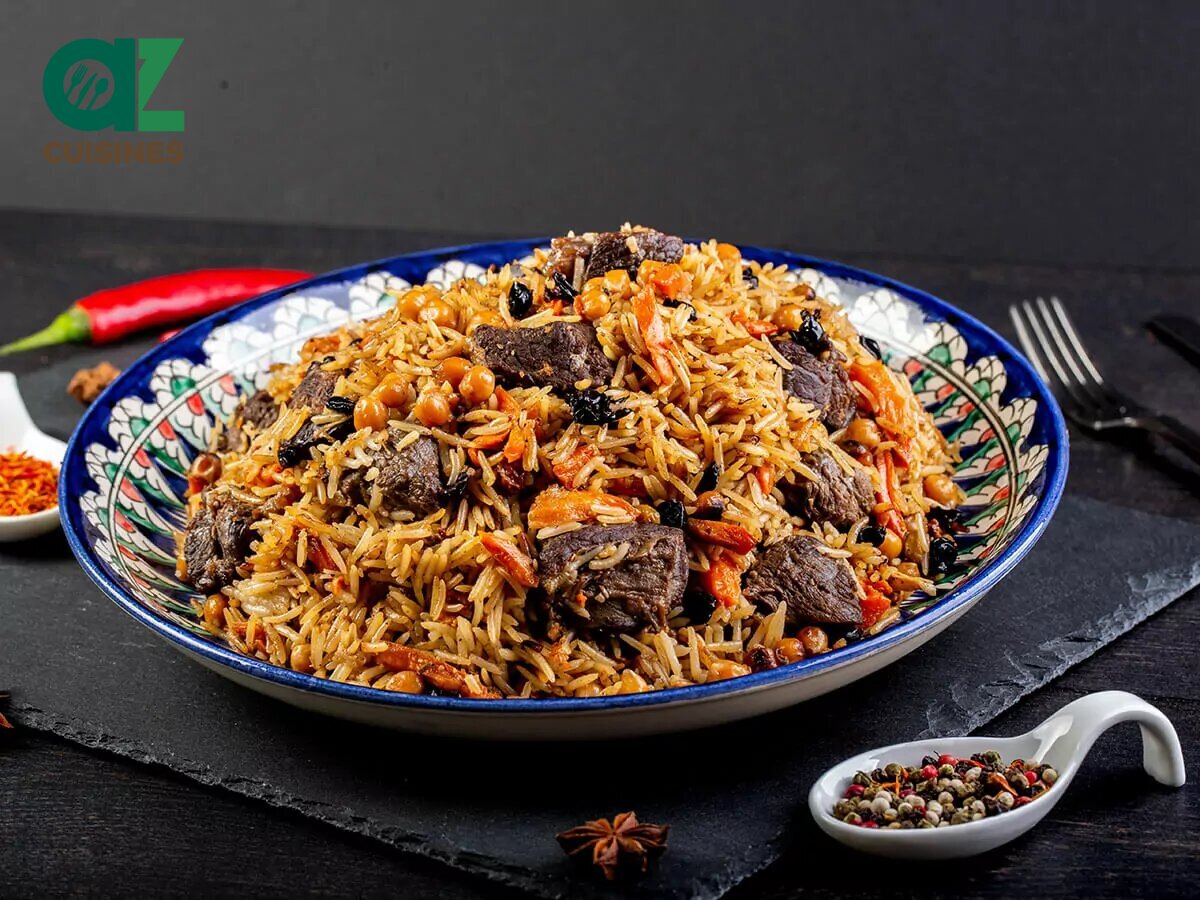
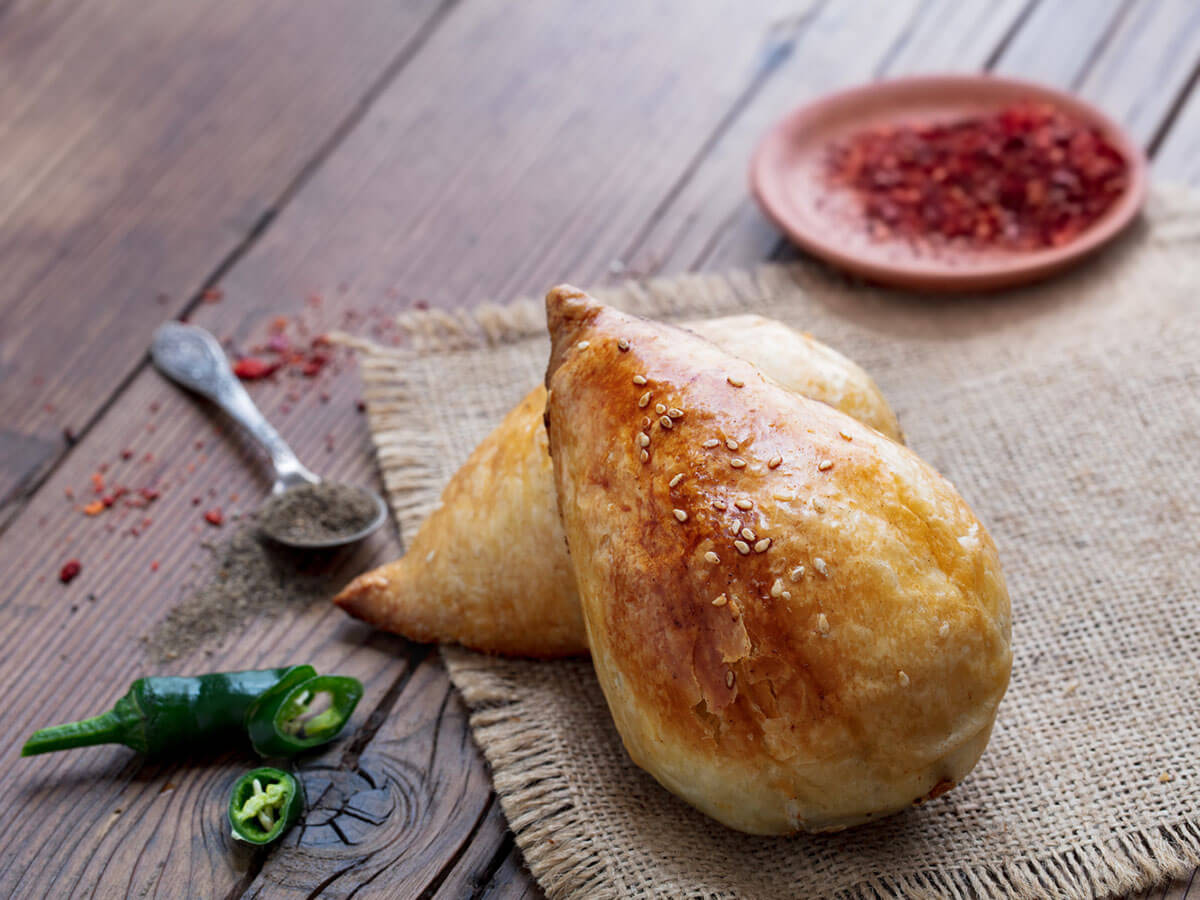
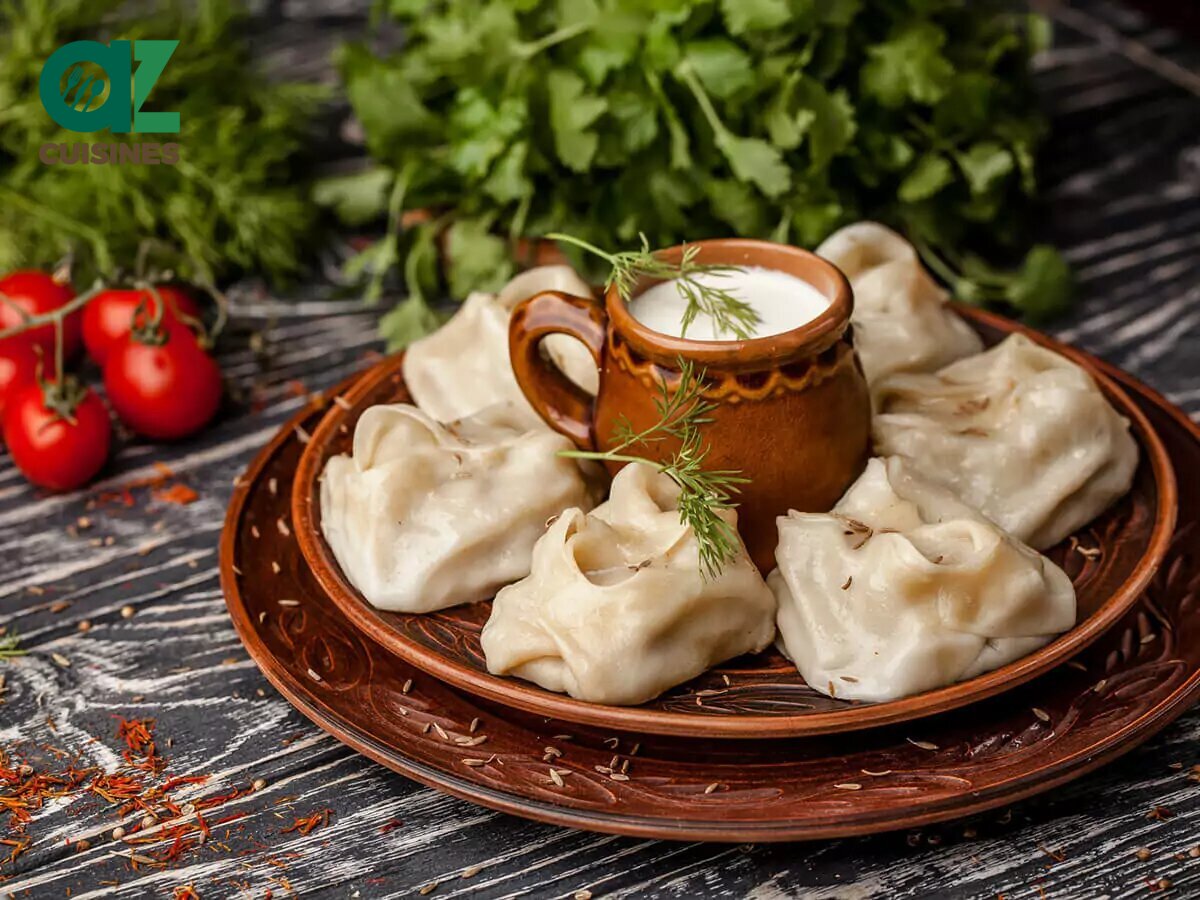

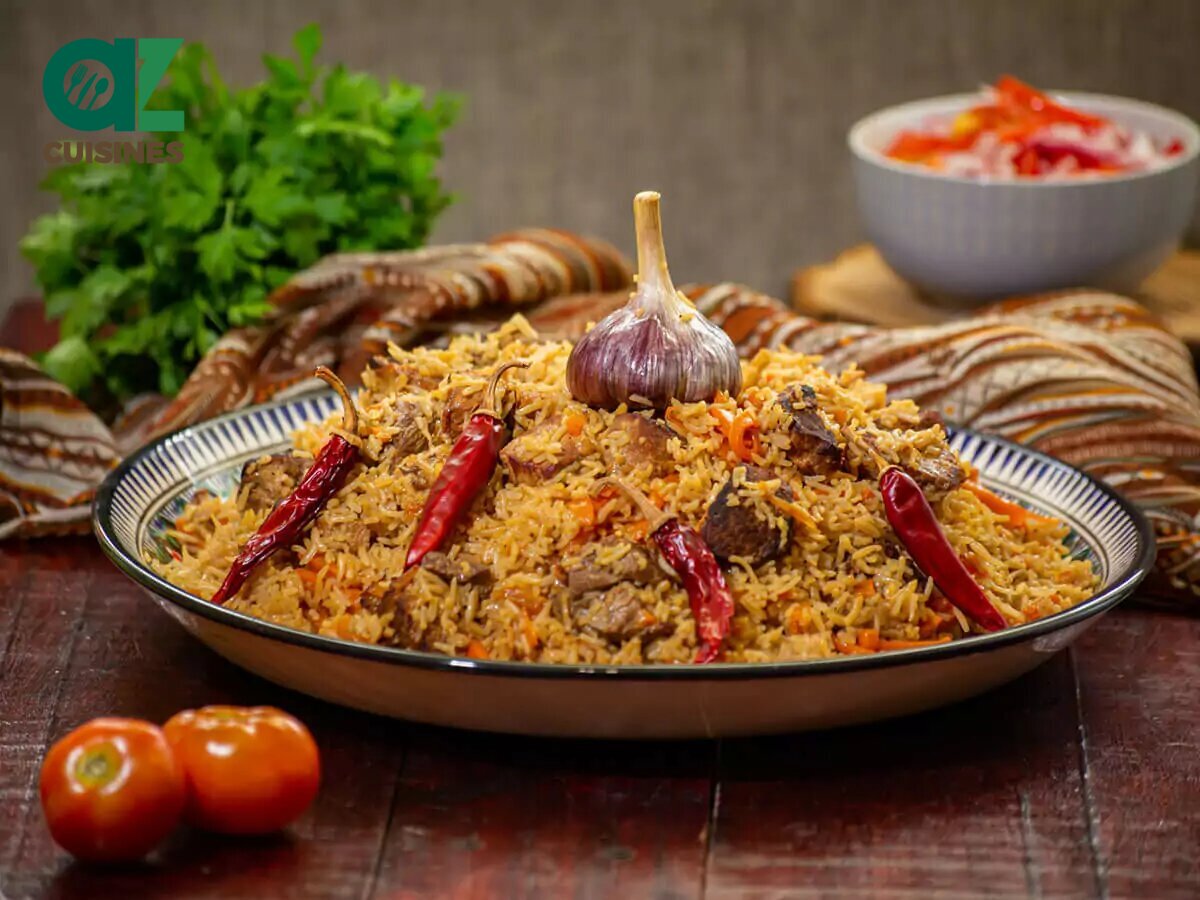
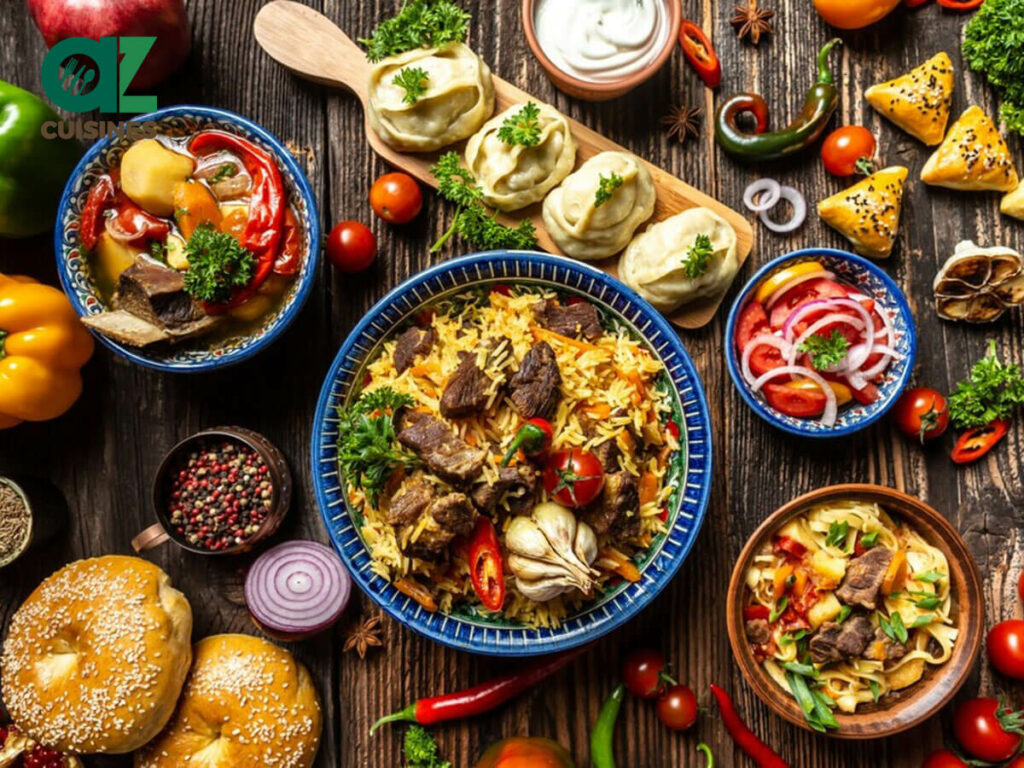
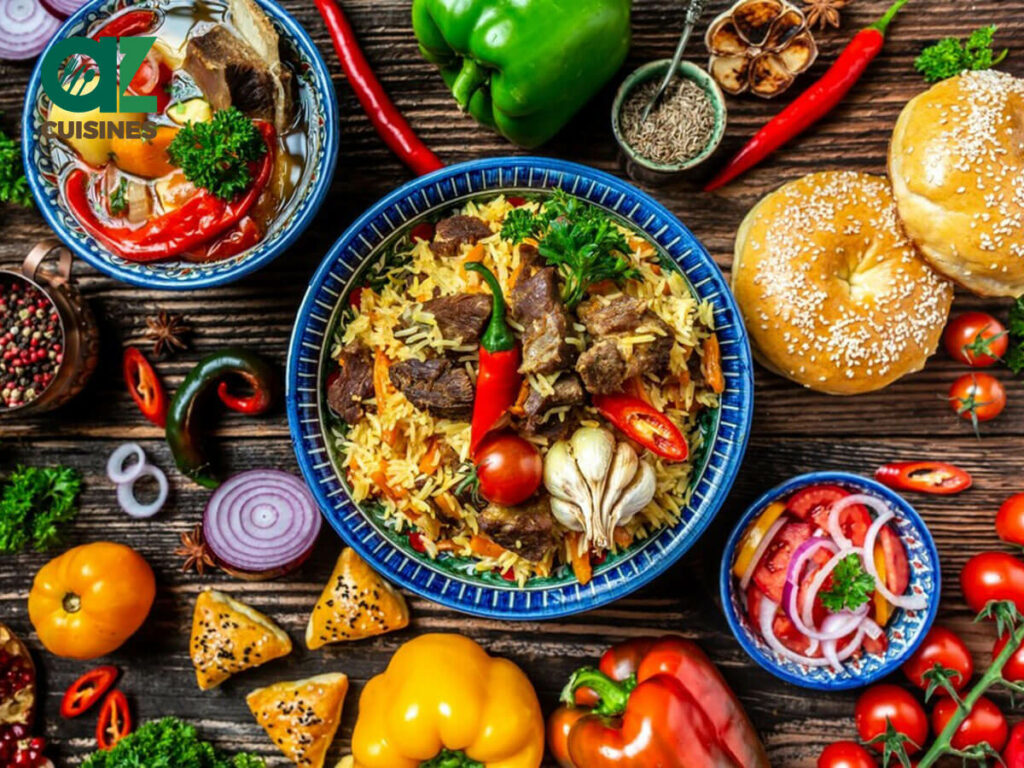
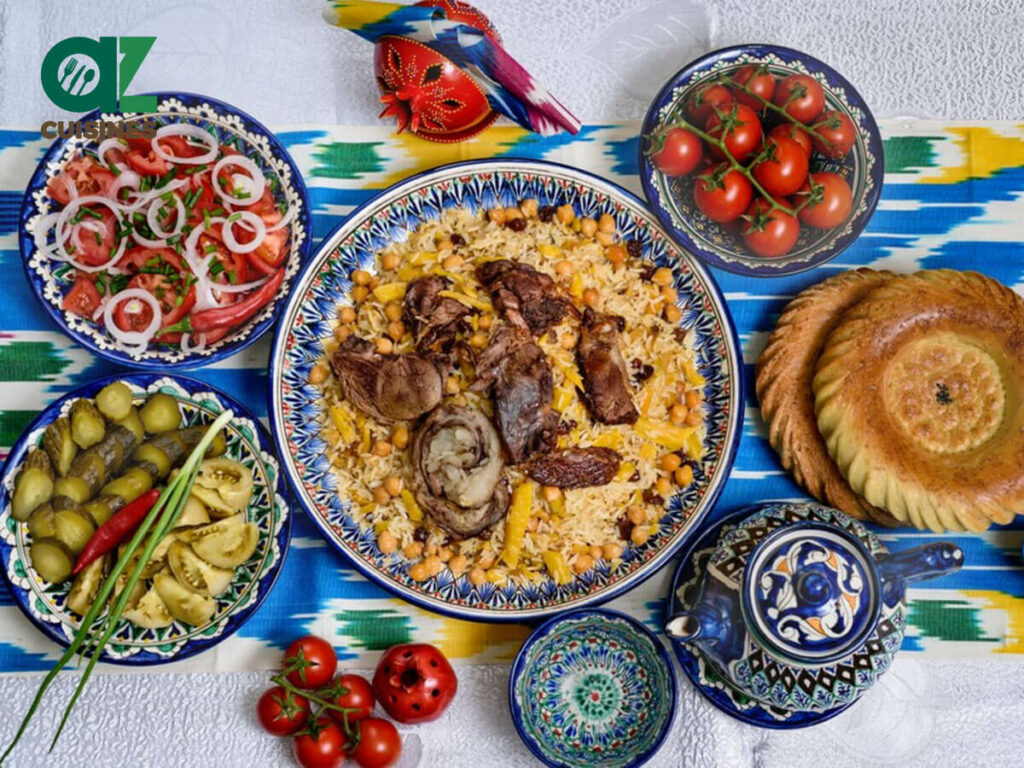
Adam Sam
Senior Food and Drink Editor
Expertise
Food Writer & Recipe Developer, Recipe Tester, Bartender, Cooking-video Maker, Editor In Chief
Education
Adam Sam, an experienced food writer and recipe developer, is passionate about blending diverse culinary traditions, national dishes, and innovative beverages, showcasing his proficiency in both traditional and modern recipe testing.
As the Editor-in-Chief, he elevates culinary content from street food to fine dining, focusing on Western cuisine and types of drinks at azcuisines.com, and is professional in creating engaging cooking videos that simplify complex dishes and ingredients.
His passion for food is evident in his writing, where he uniquely merges various cultures, traditions, and contemporary trends, skillfully combining classic recipes with modern cooking methods.